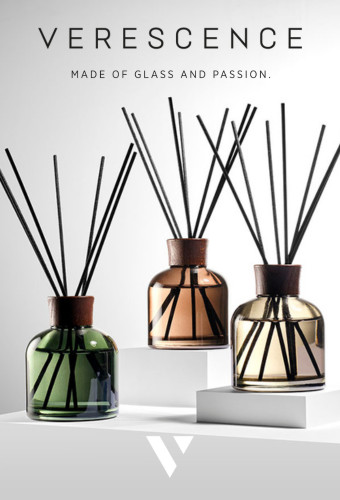For Dominique Bouvier, the President of the European Centre of Dermocosmetology (CED), the theme of these 26th Days - “Contribution of dermocosmetology to healing” - enables to make a link between clinical dermatology and cosmetology. The study, the understanding but also the repair of injuries were at the heart of the two-day conferences.

A multiparametric and three-phase process
Everyone has experienced during his life a more or less traumatic event which generated a scar. “Immediately after an injury, whether thermal, mechanical or chemical, a process enabling the healing of the skin but also of internal or external mucous membranes develops” explains by way of introduction, Prof. Alexis Desmoulière from the Department of Physiology at the Faculty of Pharmacy of Limoges.
Three successive phases take place, the purpose of which is to completely close the wound. The first phase is vascular and inflammatory, the second consists in the cell migration and proliferation and the third one in the maturation and tissue remodelling. A number of cellular mechanisms take part to this process and defects may occur leading to pathological conditions such as chronic wounds, excessive wound healing, stretch marks...
Some actors play an important role: the macrophages during the inflammatory phase, myofibroblasts during cell proliferation and all physiological phenomena of apoptosis involved during maturation. The cellular microenvironment, interactions between the cell and the extracellular matrix, mechanical stress are also factors to be considered. “Wound healing is multiparametric” confirms Prof. Philippe Humbert from the CHU of Besançon. In addition, such factors as age, the health state, but also the person’s emotional mind state will play a part in the healing process.
“The nervous system plays a role in the healing process. Skin is an extremely sensitive, highly innervated organ, a delicate balance occurs between on the one hand neurotransmitters that stimulate the healing process and on the other hand the ones that slow it down,” explains Prof. Laurent Misery from the neuroscience laboratory of Brest. Ideal healing only being observed in humans in the foetal state.
Models and objectification tests
To better understand healing in order to get a better grasp of its process is also an objective of players in the field. In vitro and in vivo models coexist. They help replicate in a standardized manner each step of the process and provide some understanding. Dr. François Berthod from the LOEX centre at the University of Laval in Quebec studies with an in vitro model the effect of the sensory nervous system on healing. “Our skin model reconstructed with human microvascular endothelial cells, also innervated with sensory mice neurons allows us to study the influence of sensory nerves, endothelial cells on the speed of wound closure independently of inflammation,” he says.
Concerning in vivo evaluations, the Dermscan laboratory has a whole range of protocols on standardized wounds to measure the contribution of cosmetics on healing. Innovative measurement tools like Raman spectroscopy, confocal microscopy or high resolution photography are used for the assessment. “With Raman spectroscopy, we can study molecular entities, which enables us to follow the penetration of actives, the changes in the composition of the Natural moisturising factor (NMF)” details Véranne Charbonnier from ProDERM. An overall assessment that increasingly combines a biometric and objective part to a subjective part obtained from answers to self assessment questionnaires.
Promote healing
At a medical level, skin substitutes, tissue engineering and stem cells are widely used to deal with the most severe scars, including so-called accidental scars. For chronic wounds such as bed sores, ulcers, approaches are different. Some target the microenvironment of the extracellular matrix to restore cellular homeostasis. Denis Barritault from OTR3 proposes a treatment based on sugar chemistry, RGTA molecules which are heparan sulfate mimetics, degraded compounds in the case of injuries and involved in cellular communication. Anaïs Raynaud from the laboratory of chemistry of natural substances of Limoges demonstrates the immunostimulatory effect of honey on wound healing. These works are the result of more than 30 years of use, by Prof. Descottes from the CHU of Limoges, of thyme honey to treat ulcers. For acne type scars which are a frequently observed complication, the various possibilities offered by lasers were discussed by Dr. Michel Magis.
Finally, to improve the quality of life of people whose scars are still apparent both on the body and in the mind, Agnès Arquillière, a socio-esthetician has developed a skincare protocol for people who underwent a mastectomy. As for Dr. Philippe Deshayes he focuses on corrective make-up.
What about cosmetics?
Cosmetics is involved in the healing phenomena which are found at stretch marks site but also on micro tears observed in aged skins. “In the case of cosmetics, emphasises Humbert, we act on healthy skins.” In dermocosmetology, the scope is wider since it also covers cracks, cuts, splits, diaper rashes. Solutions provided by brands are increasingly sophisticated, based on biological efficacy coupled with good marketing.
Suppliers of cosmetic actives in turn are closely studying the healing process to better meet their customers’ needs. This is particularly the case with Silab and the active Glyco-Repair® which is now also available in an organic version. Glyco-Repair® Bio regenerates the depleted natural repair systems by impacting on the synthesis of growth factor activin A, which are tissue repair mediator, and on the synthesis of alpha-SMA, the characteristic marker of myofibroblasts. This is also the case with Codif’s EPS and MEPS, exopolysaccharides produced and secreted by marine plankton, which impact the epidermal reconstruction. "We have demonstrated that they improve the epidermal reconstruction by stimulating proteins of the epidermal differentiation complex (EDC) and antimicrobial peptides,” said Pierre-Yves Morvan, R&D Director, Codif International.
Finally, a source of inspiration for cosmetology is, according to Dr Patricia Rousselle from the Institute of biology and chemistry of proteins of Lyon, “the dermo-epidermal junction, which is a living base capable of repairing the damages of time.”
We can be certain that all of these pieces of advices were heard by the audience.



































